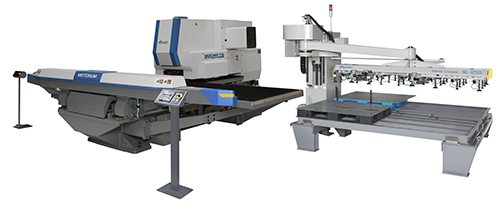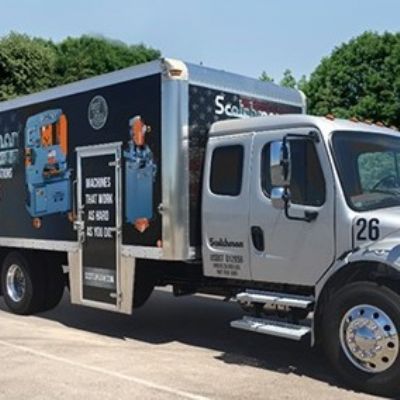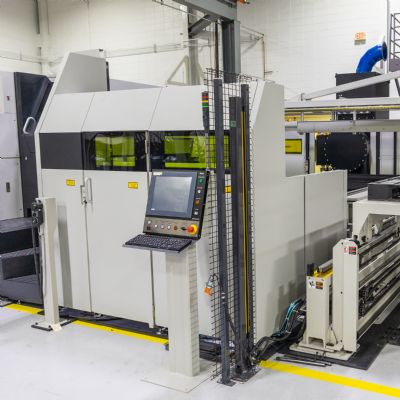Maximum Part Size, Minimal Material Waste
Another reason to consider the addition of CNC punching: press-bed size.
“Stampers are limited by the size of the press bed,” Tyl explains. “Should the part or tooling extend beyond that size, stamping is not possible. However, punching machines offer repositioning, where, with a 4 by 8 ft. table, a punching machine can produce parts longer than 8 ft. Just reposition the material and add tables to provide support. The sheet can be rearranged in any configuration as long as the work occurs in that 4 by 8-ft. area.”
In addition, while the amount of parts produced is limited by stamping-press tooling, nesting enables punching-machine production of multiple parts from a single sheet.
“This ability greatly reduces material usage,” says Tyl, leading into a discussion on material savings and efficiency when buying sheet as opposed to coil, as often is the case in stamping operations. “All service centers carry sheet inventory in standard sizes. When stampers buy slit material, that is limited to the width of the coil. And, buying material for a 5-in.-wide part means slitting off of a coil and purchasing that width for the entire coil length. If the job is 1000 parts but the coil yields 2000 parts, someone has to eat that scrap—paying for the unused portion of that slit coil.
“When buying for a punching machine,” he continues, “material in whatever width available from the mill is cut to a specific length, and from each of those sheets, thanks to nesting, umpteen parts can be produced. This significantly reduces scrap—no need to consider the entire length of a coil because a punching machine’s material needs are calculated on a per-sheet basis.”
Flexibility in Part Revisions
Of course, a revised stamped part means revising the tooling, a big-bucks proposition. Here, CNC punching can pick up the slack either by taking over the job using low-cost tool changeouts while new hard tooling is produced, or testing out new hard tooling options as an R&D operation.
In addition, a CNC punching machine may be able to accept a part revision simply though programming the relocation of a feature.
“Want to move a form 0.5 in.? Just program it,” Tyl explains. “Take the X axis and move it 0.5 in. via CNC programming. This technology enables changes on the fly, making CNC punching ideal not only for prototyping, but for these types of part revisions.”
Combine Processes
Stamping and CNC punching need not be a one-or-the-other decision. Numerous examples point out how CNC punching machines and stamping presses can be used together to make parts.
“Perform blanking on the stamping press and do the rest on a CNC punching machine, or vice versa,” Tyl says. “Punching machines do have form-height limitations, with the ability to form to 1 in. high, so consider that. But a punching machine may be able to handle 90 percent of the job, with transfer to a stamping press for a single process such as a deep form. Or, perhaps a stamping press performs 90 percent of the work. A punching machine can grip and orient a small piece, so following stamping, the punching machine can thread holes or create other features to finish the part. I have seen punching machines used as first, middle and end stages in part production.” MF
View Glossary of Metalforming Terms
See also: Muratec Murata Machinery USA, Inc.
Technologies: CNC Punching










